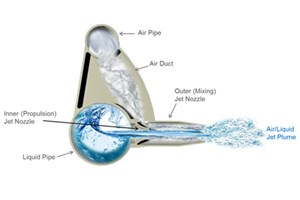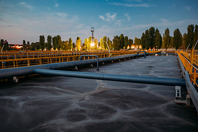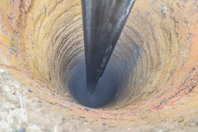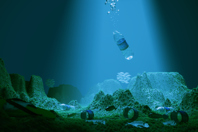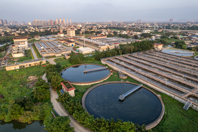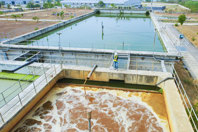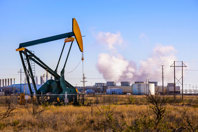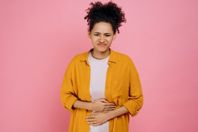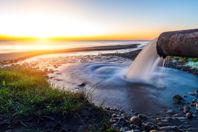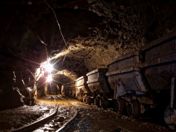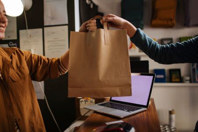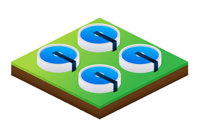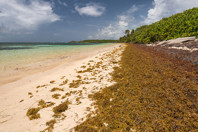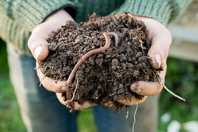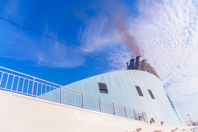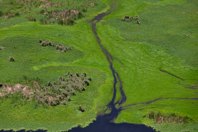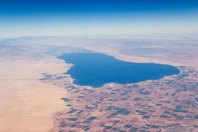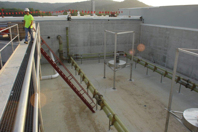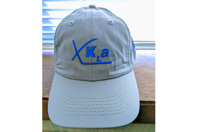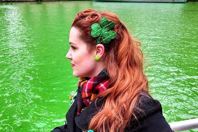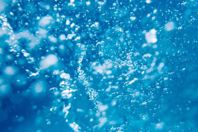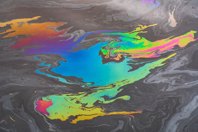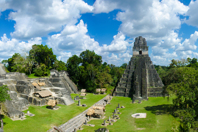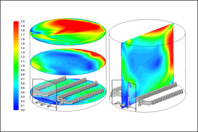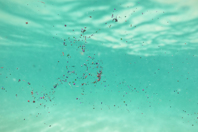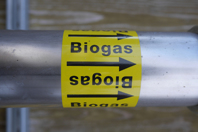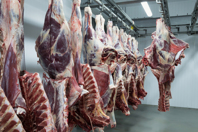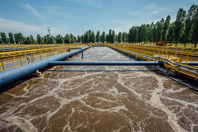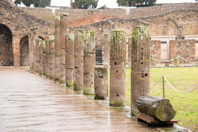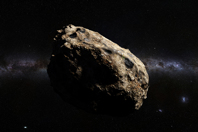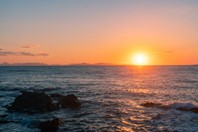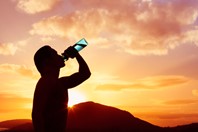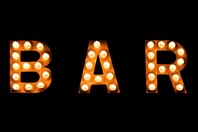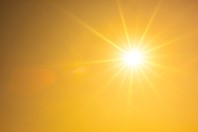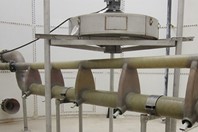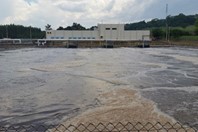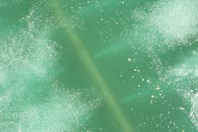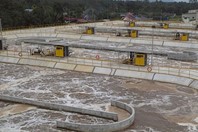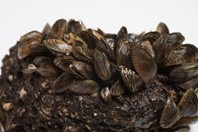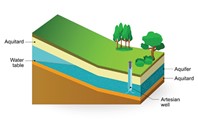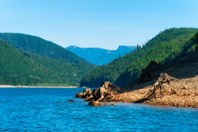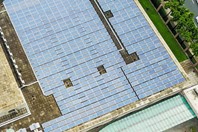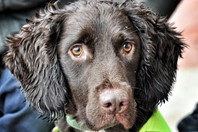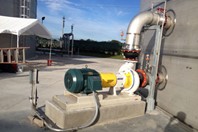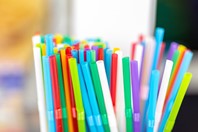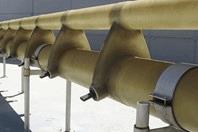
| The KLa Difference: Technology, Experience, Knowledge, and Service |
||||
|---|---|---|---|---|
|
Since 2001, KLa Systems has supplied innovative jet aeration and jet mixing systems for industry, water utilities, and municipalities around the world. KLa Systems has the most experienced team of oxygen transfer professionals in the industry and over the past 30 years, our team has successfully completed more than 1,300 jet aeration/mixing projects in 32 different countries. Our mission is to develop our products by embracing modern treatment technologies, improving manufacturing efficiency, and reducing our system's carbon footprint. |
||||
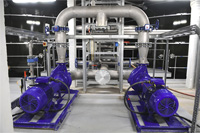 |
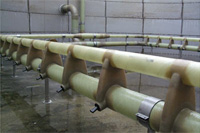 |
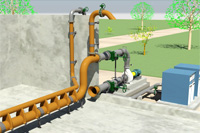 |
||
| Brewery Reuses Water For Factory Wash-Down | KLa Slot Injector™ Aeration System Expands The Capacity Of An SBR At A Landfill Leachate Treatment Facility | KLa Slot Injector Aeration System For CFAS Process Touch Panel Manufacturing Plant Wastewater Treatment | ||
KLA SYSTEMS
KLa Systems Inc. is an equipment supplier specializing in custom designed mixing and aeration technologies for biological wastewater treatment processes. We are the market leader and our team of personnel has over 30 years’ experience in the water industry, having successfully completed well over 1,300 projects worldwide.
Our focus is in working with large industries, municipalities, and water utilities on a global basis and our products include jet mixing, jet aeration, and Slot Injector™ aeration systems. KLa Systems goal is to furnish the most cost effective system in the industry, while applying our technology to both conventional and advanced biological treatment processes for the purpose of both creating a cleaner environment while assisting our customers in making their treatment plants more sustainable.
Click Here To Download Videos:
•Video: Bi-Directional Jet Aerator - Mixing Pattern
•Video: Directional Slot Injector Mixing Pattern
•Video: Jet Aerator - Starting Up
•Video: Jet Mixer - Start Up
•Video: MBBR Slot Injector
Interested in being a representative click here
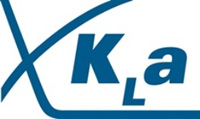
CONTACT INFORMATION
KLa Systems
31 Mill Street. PO Box 940
Assonet, MA 02702-0896
UNITED STATES
Phone: 508-644-5555
Fax: 508-644-5550
Contact: Sales
KLA SYSTEMS ARTICLES
-
Jet aeration retrofits modernize aging wastewater tanks with minimal downtime, integrating easily into existing basins while delivering long-term reliability, higher oxygen transfer efficiency, and significantly lower lifecycle costs.
-
Jet aeration delivers decades-long service life with corrosion-resistant materials, clog-resistant design, and simplified maintenance—eliminating basin outages and reducing lifecycle costs compared to fine-bubble diffusers.
-
Integrating aeration and mixing through jet aeration enhances oxygen transfer, improves process control, and significantly lowers power consumption—especially when upgraded with advanced Slot Injector
technology.
-
Jet aeration improves nutrient removal by delivering superior oxygen transfer, intense mixing, and flexible process control—cutting energy use, enhancing BNR performance, and supporting long-term operational reliability.
-
For years, the coastal regions of Alaska have been popular cruise spots. However, the beautiful landscapes and clear waterways the region is known for have become the epicenter of a serious environmental crisis fueled by cruise ship operations.
-
On September 10, 2025, the U.S. Environmental Protection Agency (EPA) announced a major regulatory shift, granting the State of Arizona primary enforcement authority, or "primacy," over all classes of underground injection wells within its borders.
-
Our modern society generates around 460 million metric tons of plastic waste each year, with around 20 million ending up in the environment, particularly water bodies. Plastics take decades to decompose, with some types requiring hundreds of years. Even worse, as they do break down, they form microplastics, which end up being consumed by wildlife and ultimately people.
-
Although essential to environmental and community health, the wastewater industry consumes incredible amounts of energy and is carbon intensive. Wastewater treatment plants (WWTPs) account for 4% of total energy consumption and 25% of the water sector’s energy use. In the U.S., for example, WWTPs generated 20 million metric tons (MMT) of CO2-equivalent in 2017.
-
The continuous growth of artificial intelligence (AI) and high-performance computing (HPC) is driving a proportional demand for data centers that can manage their substantial infrastructure requirements. This, in turn, presents a significant challenge: balancing the increasing need for computing resources with crucial sustainability goals, particularly regarding water usage.
-
Wastewater treatment plants (WWTPs) often struggle with foaming in treatment tanks. Foaming, particularly from stable foams, can disrupt biological processes and often need costly chemicals to control.
-
Most wastewater treatment plant (WWTP) professionals know that nitrous oxide (N₂O), also known as laughing gas, is released from tanks during nutrient removal processes. This potent greenhouse gas is produced by the organisms that clean the water. The exact amount of laughing gas emissions change throughout the day and year, peaking in colder seasons. For years, the reason for this variation has been unknown, which has made it difficult to control.
-
Oil companies, particularly in the Permian Basin of West Texas and New Mexico, are investing millions in testing technologies to recycle and reuse produced water. As oil production has surged, so have the volumes of brackish and chemically-laden fluid, with producers in the Permian pumping roughly four barrels of water for each barrel of crude.
-
Increasing water demands in Texas cities are creating significant conflict over shared groundwater resources. Texas’s unique legal framework, particularly the “rule of capture,” and the limitations of current regulatory mechanisms, is creating a new gold rush among public and private entities that wish to utilize the increasingly scarce resource.
-
Recent sightings of two common dolphins in New York City's East River have generated excitement and are viewed by experts as a positive indicator of improving water quality.
-
Scientists have uncovered a massive reservoir of water in Oregon’s Cascade Range mountains. Researchers from the University of Oregon studying volcanic terrain mapped the amount of water stored beneath the crest of the central Oregon Cascades, discovering an aquifer significantly larger than previously thought.
-
Rivers have long been symbols of life, progress, and continuity. Their steady flows are seen as a metaphor for constancy of nature. They carve through landscapes, connecting ecosystems and communities, embodying resilience and unyielding forward motion. But it may come as a surprise for many to learn that rivers can and do defy this symbolism, reversing their course and flowing backward.
-
Decorating a Christmas tree is a time-honored tradition that dates further back than most realize. The earlier in the season one buys a Christmas tree, however, the harder it is to keep it from turning brown before the gifts have been opened.
-
Most treated wastewater is pumped back into a body of water once it meets certain environmental standards. In Arizona, wastewater effluent (a.k.a. reclaimed water) is being used to restore the once-dry Santa Cruz River, breathing new life into the ecosystem and allowing struggling freshwater species to thrive.
-
Weeks after Tropical Storm Helene devastated the area on September 27, 2024, officials in North Carolina’s Mitchell County continue to grapple with a significant water crisis with no end in sight.
-
Local brewers are up in arms about proposed increases in wastewater connection fees. The new fees would raise the cost for breweries to dump their wastewater down the sewer by 35% every year over the next three years, beginning in fiscal year 2025.
-
A new study reveals a new reason to chant “Rain, Rain, Go Away!” Research from the School of Public Health at Boston University has found that gastrointestinal illnesses increase by as much as 62% during extreme wet weather events in communities with combined sewer systems. In these systems, the excess rainfall can cause combined sewer overflows (CSOs), that bring a mix of stormwater and wastewater up onto the streets, into rivers and other water bodies, and can even back up into people’s yards or homes.
-
The Panama Canal has been facing ongoing challenges regarding its water supply, an issue dating back to its inception in 1914. While water levels in Gatun Lake were originally sufficient, increasing demands have continuously strained the resource.
-
Beyond immigration, a new border dispute between the U.S. and Mexico has been heating up for years and is about to reach a fever pitch. An 80-year-old treaty obligates Mexico to deliver water from tributaries on their side of the Rio Grande to parts of South Texas every five years. But many such shipments have been delayed or halted altogether.
-
While everything is bigger in Texas, it seems that reusing wastewater is about to get huge. Both public and private entities are pushing hard to increase water reuse for both environmental and economic reasons.
-
This article delves into the six most prevalent wastewater treatment issues in industrial treatment plants and explores how jet aeration and jet mixing technology can effectively mitigate them.
-
Learn about the early history, development, and modern-day applications of jet aerators, highlighting their significance in wastewater treatment
-
The versatility and efficiency of jet aeration systems make them valuable assets in the quest for cost-effective wastewater treatment solutions, underscoring their universal appeal.
-
A 30-year clean-up in Rhode Island hit an important milestone with the completion of a 2.2-mile tunnel to transport combined sewer and stormwater.
-
One of the largest cities in the world, Mexico City, is facing a severe water crisis due to drought conditions exacerbated by climate change and infrastructure problems. Scientists are now concerned the region could hit a “day zero” scenario, where water supplies completely run out.
-
As a region recovers from one of the most devastating environmental catastrophes in recent memory, its residents are fighting against the disposal plans for the resulting wastewater.
-
Though abandoned coal mines are not typically known for the environmental benefits they offer, a project in the UK shows how that is quickly changing.
-
The holiday season doesn’t just bring with it an increase of snowfall and good cheer. Along with annual office parties, family gatherings and yuletide merriment, there is often a dramatic increase in the amount of alcohol we consume.
-
Increasing levels of a common mineral is becoming a threat to source water quality, as well as the plants, animals, and humans who count on it.
-
A fast-growing capital city in one of the driest regions of the country is turning to an innovative wastewater treatment process to serve consumers well into the future.
-
It seems that the attention on one of the world’s most high-profile drinking water and wastewater contaminant classes is doing some good, as manufacturers of all stripes work to eliminate the chemicals from their products.
-
One of the world’s most historically innovative water managers has now implemented a decidedly futuristic solution for protecting source water quality.
-
In what could be a major victory in the wastewater war against nutrient pollution, cutting-edge research is now making it possible to recycle phosphorus from influent and put it to good use for farmers.
-
One of the world’s favorite beverages could be the key to popularizing an effective, yet often misunderstood, wastewater treatment practice and better conserve previous drinking resources.
-
Despite alarm over numerous reports of dead fish in Rhode Island rivers, experts have assured consumers that they are not the result of water contamination.
-
By understanding the types of substances and processes that can negatively impact aeration performance, operators can ensure that their system works as intended.
-
Today’s aeration equipment has overcome past concerns regarding energy efficiency and operating lifespan which are making deep aeration tanks an ideal solution for select wastewater applications.
-
Aeration pumps with variable frequency drives (VFDs) offer the ability to fine tune energy usage and eliminate excess power consumption, which can improve operational efficiency in wastewater treatment.
-
As a record-breaking seaweed bloom approaches the coast of Florida, prompting concerns over the health of wildlife, the amount of nutrients discharged by wastewater operations, and climate change, curiosity is growing all around the world over what exactly this bloom is made of and what its long-term impact will be.
-
As water scarcity worsens in the West and beyond, one of the country’s thirstiest industries is embracing a pairing you thought you’d never see: wine and worms.
-
A group of enterprising researchers have come up with a way to turn one of the world’s biggest wastewater issues into a new positive for environmental health.
-
Following a year that was marked by drastic, historic drought conditions, California was hit with winter storms and widespread snow that dramatically shifted its ongoing battle against water scarcity.
-
An innovative wastewater treatment team in Washington State has struck upon a decidedly natural way of removing a stubborn pest.
-
Leading researchers may have made a significant breakthrough in the ongoing battle against one of the country’s most notorious — and notoriously difficult to treat — drinking water and wastewater contaminants.
-
One of the world’s oldest drinking water practices is one that still can’t be totally explained by science. But this Halloween, it’s worth embracing the decidedly mystical process of water dowsing.
-
In an all-too-rare pleasant surprise for the state of source water quality around the world, scientists have found that Australia’s Great Barrier Reef is trending in a healthy direction following years of bleaching and other harmful events to its ecosystem.
-
An imaginative and enterprising young man may have just cracked the code for battling one of the world’s most pervasive and difficult-to-treat water contaminants, as 18-year-old Fionn Ferreira took home the top prize at the Google Science Fair for his technique of removing microplastics.
-
While the use of exhaust “scrubbers” on seabound vessels may be benefitting air quality, it now seems that this trend is coming at the expense of the world’s source water.
-
As warmer weather, increased flooding, and the continued use of nutrient-laden fertilizers all combine to drive harmful algal bloom in source water this season, a major project in Florida is exploring an innovative solution to the problem.
-
While it’s well known that source water scarcity is presenting numerous drinking water problems across the country — forcing consumer cutbacks, interstate conflicts, and more — recent innovation has uncovered a silver lining, right in the heart of this historic drought.
-
Learn how skid-mounted aeration systems can be a useful solution for many problems that occur throughout the wastewater treatment process.
-
Resource recovery projects offer a beneficial way to extract value from organic waste streams. In the process, this waste is diverted from landfills, effectively reducing greenhouse gas (GHG) emissions. When sent to landfills, organic materials decompose and convert to carbon dioxide and methane, the latter of which is a short-lived climate pollutant that, according to the U.S. Environmental Protection Agency (EPA), is roughly 25 times as potent as carbon dioxide at trapping heat in the atmosphere. Capturing methane prevents it from contributing to a warming planet.
-
Nitrogen removal standards are a pressing concern for meat and poultry processing plants. Historically, food processing plants discharging to public waterways or directly to publicly owned wastewater treatment plants have faced challenges in meeting effluent limitation guidelines (ELGs) for nutrient removal. That may soon become even tougher yet with the U.S. Environmental Protection Agency (EPA) announcing in September 2021 that it has completed a detailed study of the meat and poultry products category and will initiate new rulemaking to revise the existing discharge standards for the industry.
-
To many in the water treatment industry, Dr. W. Wesley Eckenfelder is considered the ‘godfather’ and a leading pioneer in the field of industrial wastewater management. Over the course of this career, he founded several environmental engineering companies and taught for over 30 years as a university professor. He also wrote more than 30 books.
-
Recent university research has identified an unlikely tool for battling one of source water’s most challenging nemeses.
-
As St. Patrick’s Day is celebrated across the country, cities like Tampa Bay and Chicago are preparing to dye local source waterbodies a festive green. And that leads many consumers to wonder if this flashy tradition is damaging our source water.
-
As the 2022 Beijing Winter Olympics reaches its conclusion, it may not be best remembered for its opening ceremony, international comradery, or fierce competition. Rather, the event’s water impact could be its most significant legacy.
-
As the damage being done to natural resources, particularly source-water bodies, continues to grow, more innovative solutions will be needed to protect wildlife and, ultimately, our drinking water. Now, a new solution leveraging a seemingly simple process has emerged to do just that.
-
Among the numerous threats to drinking water and wastewater quality presented by ongoing climate change, the increasing likelihood of oil spills at sea is one of the most challenging. As ABC News reported recently, with sea levels rising and stronger storms striking, these water-contamination events could become more likely than ever.
-
As a water industry professional, you’ve no doubt seen the efforts of municipalities to promote tap water over bottled water as the original, sustainable solution. Many cities will hand out free reusable bottles to promote the drinking water their utility produces at events and reduce plastic littering streets and waterways. Your municipality may have participated in similar PR campaigns. Philadelphia, like many large cities, has created a website dedicated to its’ Drink Philly Tap cause.
-
The new Infrastructure Investment and Jobs Act will invest $1 billion over the next five years in water recycling programs for the Western United States. As reported by the WateReuse Association, this is historic investment over the roughly $65 million per year water recycling initiatives had previously received through the Bureau of Reclamation.
-
In a small inlet off the coast of Northern Scotland, known as the Dornoch Firth, there’s been an effort to repopulate oysters that were extinct from overfishing. What’s special about this effort is that these oysters are being called upon to drink whiskey and help combat climate change.
-
As water resources are nearing a critical point, with population growth and environmental factors putting the squeeze on supplies, water scarcity has been an emerging concern across the globe.
-
As COVID-19 vaccination rates continue to inch upward across the U.S., office buildings and other businesses that remained closed are now springing back to life. However, because nobody has been around — to flush toilets, wash their hands, and drink from the water fountains — the water inside these facilities that remained stagnant long enough to harm those who return, if not properly addressed.
-
With temperatures rising and summer just around the corner, water meters are about to be speeding up. Not only can that get expensive, but water utilities in many parts of the country are struggling to keep up with demand.
-
Microplastics are a hot topic these days. Spawned by everything from plastic bags to laundered clothing, the volume of tiny particles that pollute our oceans has exploded in recent years.
-
Modern technology is a big reason that municipal utilities can provide clean and safe drinking water for customers, but even contemporary water professionals might be awestruck at the effectiveness of some ancient Mayan treatment systems.
-
Here are some insights on CFD technology, its specific use in wastewater basins, and inside tips on how to apply it to greatest advantage across a variety of processes.
-
Here are six important considerations for keeping new or upgraded designs from casting a dark shadow on aeration cost, convenience, and consistency.
-
Cost-efficient aeration still remains an underlying challenge. This Q&A article provides a look at how the industry arrived at today’s opportunities and where it’s headed for the future.
-
Keeping pace with changing industrial wastewater treatment demands can raise multiple issues of oxygen demand, capital cost, and operating expense, often without the flexibility of taking basins out of service to upgrade to new levels of performance. Fortunately, there are alternatives for delivering more oxygen to treat more water.
-
When you think about water efficiency, it might be difficult to fathom that humans have an advantage over their closest living animal relatives. However, a new study shows that people use as much as half the water that chimpanzees and other apes use daily.
-
Cybersecurity at municipal water utilities has been a growing concern in recent years, but the latest hack into a small Florida city’s water supply is shining a spotlight on the scope of the vulnerability and the challenges of preventing something similar from happening most everywhere else.
-
You might not be able to tell with a casual look, but rivers across the U.S. have been changing color. And that’s not necessarily a good thing.
-
Surviving a trip to Mars will be a tricky proposition. Based on the distance and resources needed for any journey, it will be necessary for astronauts to produce some of their own supplies, like fuel and water, after they arrive on the surface of our closest planetary neighbor.
-
Just off the coast of Georgetown, SC, a retired 65-foot fishing boat was recently sunk 50 feet underwater, where it joins a barge and nearly two dozen Army vehicles. Off the coast of Charleston, a short distance to the south, eight concrete towers of various heights have been installed on the sea floor.
-
Switzerland spends more than $200 million annually to combat littering, but this year its cleanup efforts feature a new type of rubbish: discarded face masks used for COVID-19 protection.
-
Few things will upset your vacation plans to the Gulf of Mexico quicker than news that a red tide is set to greet you at the shoreline. And that angst extends to restaurants, shops, and other businesses in the area, which take a beating when these harmful algal blooms, or HABs, drive away beachgoers.
-
Their name might sound like something out of a cartoon, but nurdles are causing quite the stir.
-
Droughts and water scarcity are making it increasingly difficult to farm for a growing global population. And while those supply factors could be disastrous if not addressed, newer technology applications are tackling the demand side of the equation.
-
Since the coronavirus started sweeping through the U.S., multiple research efforts have gotten underway to figure out how wastewater can provide clues about its spread. Now, some colleges and universities are planning to put wastewater under a microscope as an early warning system when students come back to campus this fall.
-
For distilleries, high levels of biochemical oxygen demand (BOD), nitrogen, total dissolved solids (TDS), and total suspended solids (TSS) put extra pressure on optimal biological treatment requirements. Here are some techniques that can help distillers put a little extra money in the bank while meeting the challenges of environmental discharge requirements.
-
While wastewater effluent standards mandated by the U.S. EPA and individual states eventually come down to a number, it pays to understand how those standards are established and the challenges of meeting them in real-world applications. Here is a look at the multiple pieces of that puzzle, including their wastewater treatment implications for industrial-scale meat and poultry processing operations.
-
As local breweries grow in popularity, their initial focus on hand-crafted recipes can quickly shift to business realities such as the costs and logistics of process wastewater treatment. Publicly owned treatment works (POTWs), brewery owners, and consulting engineers all have roles to play in making that trajectory smoother for up-and-coming craft and microbrewers.
-
While dissolved oxygen (DO) levels are critical considerations in aerobic wastewater treatment processes, not every application maintains a consistent level of demand. How industrial wastewater treatment plants (WWTPs) track and fulfill those needs make a big difference in the optimum performance and cost-efficiency of their operations.
-
As craft beer was embraced as an affordable luxury by many Americans in recent years, the number of breweries has exploded. However, that segment of the industry, as well as traditional brewers, are taking a massive hit during the current coronavirus pandemic.
-
Controlling stormwater to prevent flooding and pollution is a never-ending task in many places. And officials are finding just as many solutions in ancient engineering as they are in modern technology.
-
New Orleans may have survived Hurricane Katrina, but newer stresses are impeding the region’s ability to process stormwater runoff to prevent flooding and groundwater contamination. Storms, which are dumping more water into New Orleans than ever amid climate change, are the big contributor. However, humans aren’t making things any easier.
-
It may be decades or longer before technology allows the colonization of other planets, but space exploration for one of the most vital resources — water — is already in full swing.
-
Two decades ago, the public was captivated by Julia Roberts’ portrayal of Erin Brockovich, a film about a struggling single mother who goes after big energy for polluting groundwater with hexavalent chromium. When the dust settled, the result was a class-action lawsuit settlement for more than $300 million.
-
Oceans across the globe are losing oxygen at an unprecedented rate, which is putting marine life in a serious bind, according to a new report released by the International Union for Conservation of Nature.
-
Expect to see more solar arrays sitting atop waterways.
-
The environmental problems caused by single-use plastic water bottles continue to make headlines, but that hasn’t slowed down water-related business ventures.
-
After roaming the oceans for more than a half billion years, jellyfish may finally be poised to overtake Earth’s largest bodies of water.
-
Managing the treatment of wastewater — especially industry-generated wastewater that can elevate dissolved oxygen (DO) demands far beyond those of municipal/residential applications — is hard enough. Trying to do so during upset conditions is enough to put any water treatment professional on edge. Here are several preventive and remedial options to keep in mind before or after DO readings go haywire.
-
Too much of a good thing can create new problems as quickly as it resolves old ones. Maintaining a proper balance of antifoaming agents and polymer additives is critical for sustaining the appropriate air bubble size and distribution needed to achieve dissolved oxygen (DO) requirements for neutralizing high biochemical oxygen demand (BOD) in many industrial and food processing wastewater applications.
-
A balanced wastewater process is a beautiful thing — plenty of biochemical oxygen demand (BOD), plenty of O2, and all those hungry little microbes are fat and happy. But what can be done when dissolved oxygen (DO) takes a nosedive and there’s not enough O2 to satisfy industrial and food processing BOD? Here are some preparations to consider before wastewater treatment goes completely out of whack.
-
What do a drinking establishment and an eco-friendly writing utensil have in common? They both reflect new and unconventional ways that water is being injected into commerce.
-
Several advancements in solar technology may provide the answer to drinking water production in distressed regions of the world.
-
Too many dog owners think their pets’ waste easily breaks down in nature and is helpful to plants, so they leave it on the ground. The truth is that dog poo and other pet waste is loaded with germs such as e. coli and giardia that make people sick as well as nutrients that can fuel problematic algae blooms.
-
As with any industrial process, the right tool for the job depends on the nature of the task at hand. In aerobic wastewater treatment, that optimal choice often comes down to a balance between the biological and financial demands of the application. Either way, here are several performance comparisons of how multiple aeration methods and locations stack up in industrial wastewater treatment applications.
-
Aeration for industrial and municipal wastewater treatment involves more than simply moving volumes of air through a treatment basin. It really comes down to creating and sustaining an optimal oxygenated environment for microorganisms to convert oxygen consuming compounds into CO2 and water. Here are some key considerations for making better retrofit decisions about upgrading existing basin capacity and efficiency with jet aeration.
-
Unlike most municipal wastewater treatment plant (WWTP) applications, industrial wastewater can vary widely from one application to another, even within the same plant, depending on the process being run. Industrial wastewater professionals — especially those facing specific challenges or planned volume increases — can benefit from comparing key points of differentiation in jet aeration system options before making any upgrade.
-
Looking for a way to store massive amounts of excess green energy? Water may provide the answer.
-
The hardest aspects of comparing efficiencies among submerged aeration technologies are the many variables in capital expense (CAPEX), operating expense (OPEX), and complexity of wastewater makeup. Here are five major categories for evaluating industrial wastewater aeration efficiency.
-
It took decades to solve the mystery of Garfield phones that were polluting French beaches. Turns out a load of the novelty item, modeled after the popular orange cartoon character, was slowly being purged from a shipping container that had been lost at sea. That begs the question: Are shipping containers like these polluting global waterways at alarming rates?
-
Long thought to be an issue that plagued the United Kingdom most acutely, the scourge of fatbergs has been making itself known stateside.
-
An unusual culprit has been identified as the source behind rotten smelling water in Austin, Texas. Though the source of the smell was surprising, at least it wasn’t too difficult to deal with.
-
The fallout from Flint, Michigan’s lead-contaminated drinking water has been far-flung and long-lasting.
-
Did you know that the Environmental Protection Agency (EPA) had a published Contingency Plan in anticipation of the current government shutdown? I guess in hindsight, you would have expected it for an agency with 134 facilities dotted across the country. And in fact, it’s required by the Office of Management and Budget (OMB) under Circular A-11, Section 124 that all government agencies have plans for an orderly shutdown “in the event of an absence of appropriations.”
-
Wastewater service charges vary considerably across EPA regions and States. That’s one of the key findings from the National Association of Clean Water Agencies’ (NACWA) Cost of Clean Water Index. If you live in Montana, Wyoming or the Dakotas (EPA Region 8), your average service charge of $261 a year is considerably less than the $884 your fellow Americans up in New England (EPA Region 1) are paying. As you can imagine, much of the difference is to do with population size and geography.
-
The federal government recently released its fourth National Climate Assessment which focuses on the impact climate change will have on the U.S. economy over the next century. As mandated by the Global Change Research Act of 1990, the U.S. Global Change Research Program takes a comprehensive look at climate change and its effects on the natural environment, agriculture, energy production and use, land and water resources, transportation, human health and welfare, human social systems and biological diversity.
-
According to the U.S. Geological Survey, groundwater supplies half of all drinking water to the U.S. population, nearly all of it to our rural population and over 50 billion gallons per day for agricultural needs. But according to new research out of UC Santa Barbara, supplies may be more limited than previously thought.
-
Last month, The Ocean Cleanup launched its first plastics cleanup system (System 001) in an area of the Pacific between Hawaii and California named the Great Pacific Garbage Patch. It constitutes the world’s largest accumulation zone, known as a gyre, of ocean plastics. Boyan Slat, CEO of The Ocean Cleanup, estimates that half of the Great Pacific Garbage Patch will be removed from the Ocean within five years as additional systems are applied until it achieves full-scale deployment.
-
Five years ago, the city of Detroit, MI, filed the largest municipal bankruptcy in U.S. history at an estimated $18 to 20B. At the time, there was a lot of speculation in the water market as to how the city would continue to serve its citizens with viable water and sanitary sewer services. Ultimately Detroit reached a deal with neighboring Oakland, Wayne, and Macomb counties to create the Great Lakes Water Authority (GLWA), a new regional water and sewer authority. Spring forward to today and despite Detroit’s population continuing to dwindle, it’s water and sewer provision under the GLWA has recovered significantly.
-
When you think about areas of the world where people have limited access to clean water, I’m guessing hot, sunny, arid climates come to mind. In an interesting twist, a couple of innovations are using those exact conditions to create potable water.
-
The latest disposable causing a stir in the wastewater treatment world is the contact lens. Researchers from Arizona State University recently presented their findings at an American Chemical Society event showing that contact lenses flushed down the toilet or washed down the drain can pass through wastewater treatment plants and accumulate in sewage sludge. As sludge is often applied on land for disposal and fertilizing, macro- and microplastics from lenses enter terrestrial ecosystems.
-
Recently, Ohio Governor John Kasich issued an executive order allowing the Ohio Department of Agriculture to set requirements for storing, handling and applying manure as well as nutrient management plans in an effort to reduce nutrient pollution and algal bloom growth in Lake Erie. The order is set to affect 7,000 farms across 2 million acres.
-
The annual Lake Erie harmful algal bloom forecast was recently released by the National Oceanic and Atmospheric Administration (NOAA), predicting that western Lake Erie will experience a harmful algal bloom (HAB) of cyanobacteria this summer. The bloom is expected to be smaller than in 2017 but larger than the bloom in 2016.
-
Sniffer dogs have been used for a while in the oil and gas industry to find leaks. But recently, dogs have begun to be used to find leaks in water mains.
-
For most of the United States, we’ve reached the time of year where Americans desire to maintain a perfectly green lawn starts to be tested by the warmer and dryer summer months. From the water industry’s perspective, it’s staggering just how many billions of gallons of treated water ends up being sprayed across our hallowed front and back yards in maintaining a full and aesthetically-pleasing lawn.
-
Jet aeration systems are extremely efficient due to their high alpha factor and clean water oxygen transfer performance. Proper start-up, operation, and maintenance will ensure reliable service and a long life.
-
Conserving energy and saving costs are always on the minds of wastewater professionals. Aeration accounts for more than 50 percent of electrical usage at most treatment plants. Improved aeration efficiency will always work toward the goals of saving energy and reducing operating costs.
-
As industries expand, they typically need to increase the capacity of their wastewater treatment facilities. Increasingly stringent regulatory requirements, such as lower nitrogen limits, may also signal the need to boost treatment capacity. Installing additional tanks and larger equipment not only adds capital costs but increases operating costs as well.
-
A couple of weeks ago, Environmental Protection Agency (EPA) administrator Scott Pruitt called PFAS groundwater contamination “a national priority” and pledged action at an EPA national PFAS leadership summit.
-
Writing for Mental Floss in 2015, Emily Becker finished her article on the twenty-year export of New York City’s wastewater sludge to Colorado with the words “there are no plans for the New York City poop train to leave the station again.” Fast forward to 2018 and the wheels are once again rolling.
-
It is almost too heart-breaking to watch. In the YouTube video, marine biologists from Texas A&M University extract a plastic straw from a sea turtles’ nose as the creature winces in pain. Today that video has been viewed more than 22 million times, drawing attention to the hazard that plastic straws present to animals and our environment.
-
Saturday, March 24th was a busy day at the Brightwater Clean-Water Treatment Facility in Woodinville, WA, just outside Seattle. The Utility’s Education and Community Center was full of family-oriented science experiments and art projects with organized tours of the wastewater treatment plant taking place throughout the day. All in recognition of International World Water Day which had occurred two days before.
-
For many people, hot springs conjure up thoughts of cleansing and purity. For centuries, humans have visited hot springs to relax and recover. But as with any natural water body, hot springs can also exhibit biota that can infect and in severe cases kill.
-
Aeration is the heart of every activated sludge system, as well as the most energy-intensive process. When designing or modifying a wastewater treatment facility, the aeration system design will have lasting impacts on effectiveness, capital and operating costs.
-
Last year, the National Oceanic and Atmospheric Administration (NOAA) recorded the largest hypoxic zone in the Gulf of Mexico since monitoring began 32 years ago. Hypoxic waters, often referred to as dead zones, have dissolved oxygen concentrations of less than 2-3 ppm. They are caused by eutrophication or excess nutrients that promote algal growth in water bodies. As algae decompose, they consume oxygen creating dead zones.
-
You may have read recently that Orange County Water District (OCWD) and Orange County Sanitation District (OCSD) set a Guinness World Record for the most wastewater recycled to drinking water in 24 hours. The record attempt kicked off on February 15th 2018 to mark the 10th anniversary since the districts’ Groundwater Replenishment System was launched and culminated with more than 100 million gallons per day (MGD) being produced.
-
Sequencing Batch Reactors (SBRs) are a variation of the activated sludge process that combine treatment steps into a single basin. Based on a fill-and-draw method, major phases of the SBR process include a cycle of fill (with or without aeration), react, settle, decant, and idle. Today, successful flow control strategies have made SBRs state-of-the-art technology. SBRs are commonly used today and are especially beneficial for many industrial applications.
-
Over the past 10 years, DC Water has become the harbinger of the modern water utility. It’s often unconventional approach to tackling age-old problems usually elicits one of two responses from other utility professionals. The first response is one of resignation — if only I had the budget that size permits, I’d be able to do similar things. And the second is one of awe — there’s no way I have the amount of gumption to convince regulators or customers that I have a better way.
-
One of the great turnaround stories in the history of our nation’s water bodies is that of the Chesapeake Bay. Since 1976 when the Environmental Protection Agency (U.S. EPA) first undertook a comprehensive study of the Bay, efforts to address excessive nitrogen and phosphorous degradation of water quality have steadily improved the Bay’s complex ecosystem.
-
When California’s AB2022 went into effect earlier this year, allowing the bottling of advanced purified reused water for educational purposes, Orange County Water District (OCWD) and Orange County Sanitation District began the #GetOverIt! campaign to continue to push for consumer acceptance of recycled water systems.
-
Unless you spent the last election cycle hiding under a rock (and no blame if you did), you are no doubt aware of the growing rift between the two major political parties of the United States. As reported in The Atlantic citing polling from the Pew Research Center for the People and the Press, those who identify as Democrats are becoming more liberal and those identifying as Republicans swing ever more conservative.
-
Weather plays an important role in how Americans think about water. And I don’t mean when it’s raining, we decide to grab a raincoat.
-
It wasn’t so long ago that city rivers were some of the more polluted bodies of water on the planet. In 1969 for example, the Cuyahoga River famously caught fire after years of unabated pollution, spurring an environmental movement to clean up the nation’s waterways.
-
A few years back, the Secretary of the International Farm Management Association (IFMA) announced that if the world’s population consumed food in the same manner as the citizens of the U.S., we would need 6 planet earths to keep up with demand. Now we know that the traditional diet of hamburgers, steaks and all-you-can-eat buffets across America’s heartland is slowly being diversified by a growing number of eating options, many far greener, i.e. Salad Works.
-
Membrane bioreactor (MBR) plants are found all around the world, serving as a go-to method for treating wastewater through a combination of processes. But as this technology gains popularity, operations must contend with the inherent aeration problems it presents.
-
New York City treats 1.3 billion gallons of wastewater a day across its 14 wastewater treatment plants. The city has seen a precipitous drop in fecal coliforms, with the NYC Department of Environmental Protection (DEP) reporting that fecal coliforms per 100 mL of water has fallen from 1,000 in 1972 when the Clean Water Act was passed to closer to 10 as of 2009.
-
On January 1st 2017, Philadelphia’s controversial “soda tax” went into effect, adding a 1.5-cents-per-ounce on sugary beverages sold in the city. Several cities across the U.S. have enacted similar taxes in a bid to battle diet-related diseases such as obesity and fund more healthy activities within their communities.
-
Cities all over the country have been prioritizing clean water through a variety of different programs and the City of Brotherly Love is among the ranks.
-
The Great Barrier Reef — a chain of 2,900 individual, underwater corals comprising the world’s biggest structure made by living organisms — is one of the most visible victims of climate change.
-
The Merrimack River is considered one of the major beneficiaries of the Clean Water Act of 1972.

